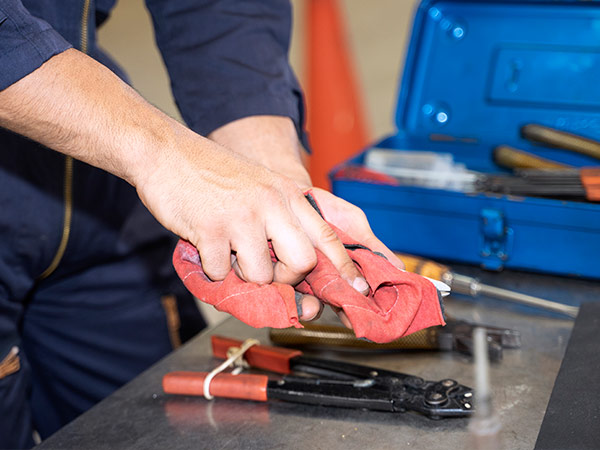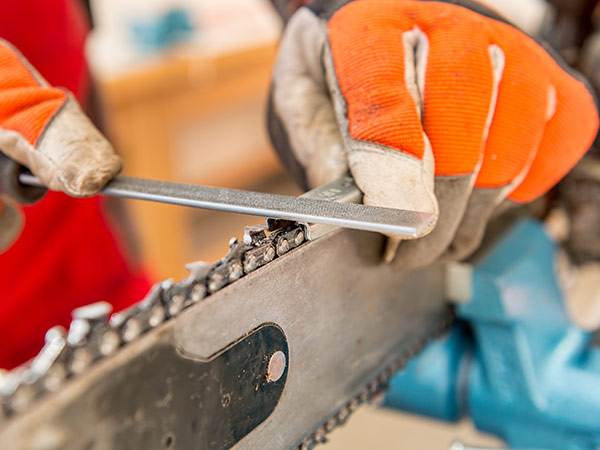

Taking Care of Your Tools: Tool Maintenance and Sharpening
As a DIYer or pro builder you know that taking care of all your tools keeps them “healthy” and ready to use when you need them. The last thing you want is to reach for a tool in the middle of a project only to find it’s rusty or the blade is dull, and you can’t finish your project. Here are some tool maintenance tips to keep your hand and power tools in tip-top shape for all your home projects.
How to Maintain Your Hand Tools
With proper maintenance, your hand tools can last for years. Every homeowner needs an arsenal of hand tools including wrenches, hammers, screwdrivers, and a collection of lawn and garden tools. To keep these tools in working order, remember these maintenance tips.


- Check tools for damage. Before and after each use, check that your hand tools are fully operational. Don’t use them if they’re damaged, rusted, or broken in any way as this can be dangerous for you and can damage your tools permanently.
- Clean tools after each use. Clean any dirt, grease, or grime completely off your hand tools after each use to keep them in the best condition. Use water and a degreasing soap along with a non-abrasive sponge or rag. Harsh chemicals in cleaning agents and abrasive scrubbers can damage your tools, especially on metal or plastic surfaces. If your tools are rusted or excessively dirty, use a rust remover or stronger cleaning agent, but ensure that it is suited for the material of your tools, so they are not damaged.
- Keep tools dry and lubricated. Dry your tools thoroughly. Even a small amount of moisture can contribute to rust. For extra protection, lubricate your tools with oil - machine oil works well. You can also apply a thin layer of a rust inhibitor liquid. Wipe off any excess oil. This will prolong the life of your tools by preventing rust from damaging your hand tools.
- Sharpen tools with blades. Keep all your bladed tools nice and sharp, so they are ready to go when you are. Sharp garden tools will properly trim your trees, shrubs, and plants rather than butcher them. Of course, sharp tools get the job done while dull tools can add time and frustration to even the simplest task.
- Use, store, and organize tools. Properly storing and organizing your collection of handheld tools, ensures they stay dry, rust-free, and easily accessible. This helps you focus on the business of building rather than hunting for a tool when you need it. From toolboxes to shelves and peg boards, there are many options to choose from for storing your tools. However you choose to store them, make sure it’s free from moisture and extreme temperature fluctuations.
When should you sharpen your tools? This depends on how frequently and intensively you use each tool. For example, garden shears, if used daily, should be sharpened daily. Most handheld tools can be sharpened with a whetstone or file.
How to Maintain Your Power Tools
Every DIYer has many power tools at their disposal from power drills to nailers, sanders, and chainsaws. All these power tools represent a significant investment, and they also help you get the job done. Power tools need proper maintenance to keep running, so implement these tips into your DIY routine to extend the life of your tools.


- Clean and store tools. Remember to unplug your power tools when you are cleaning them. Clean your tools after each use by simply wiping off dirt and blowing dust out of any vents with compressed air. This will keep dust out of the internal mechanisms of your power tools. Store your tools in their original packaging with a silica gel pack to inhibit rust and corrosion. You can also store power tools on a shelf or pegboard for quicker accessibility.
- Check tools for damage. Always check your power tools when you finish a job. Be sure to inspect the cords, blades, or sharp points for any nicks. A damaged power cord is a fire hazard, so replace it right away if it’s damaged.
If you find dents in any of the blades, immediately sharpen them so they are ready to use for your next project. Also, check that all the bolts are tight and that none of the parts have any cracks. Always follow the guidelines in the user manual if you repair or replace any damaged parts.
- Lubricate tools. Regular lubrication of the moving parts of your power tools will extend the life of the engine. Follow the instructions in the manufacturer's guidelines for this step.
- Maintain the batteries. To maximize the life of your batteries, store them in a cool, dry place and try to use your tools regularly - at least once every three months. Fully charge your batteries, and don’t let them overheat while you’re using your tools. Clean the batteries if they get dirty and replace them when they aren’t fully charging. It’s a good idea to keep an extra battery fully charged for each power tool, so you don’t have to interrupt a big job and wait for a battery to charge.
- Cool down overheated tools. If you are using a tool that overheats, stop right away and let your power tool completely cool down.
- Sharpen and calibrate tools. Keep all the blades of your power tools sharp to optimize their functionality. You will need a bench grinder or attachment on a drill to sharpen most blades. You can send your tools to a sharpening service if you don’t want to do it yourself.
It’s important to calibrate power tools such as torque wrenches. The more often you use your tools, the sooner you will need to sharpen or calibrate them.
Your tools are as hard-working as you, and we can help you keep them in professional-grade shape. If you follow our tool maintenance tips, when you are ready to get to work, you can bet each of your tools is the sharpest tool in the box. If you find you need any replacements, come see us at McCoy’s. We will help you keep your tool collection fully stocked and in great shape.
